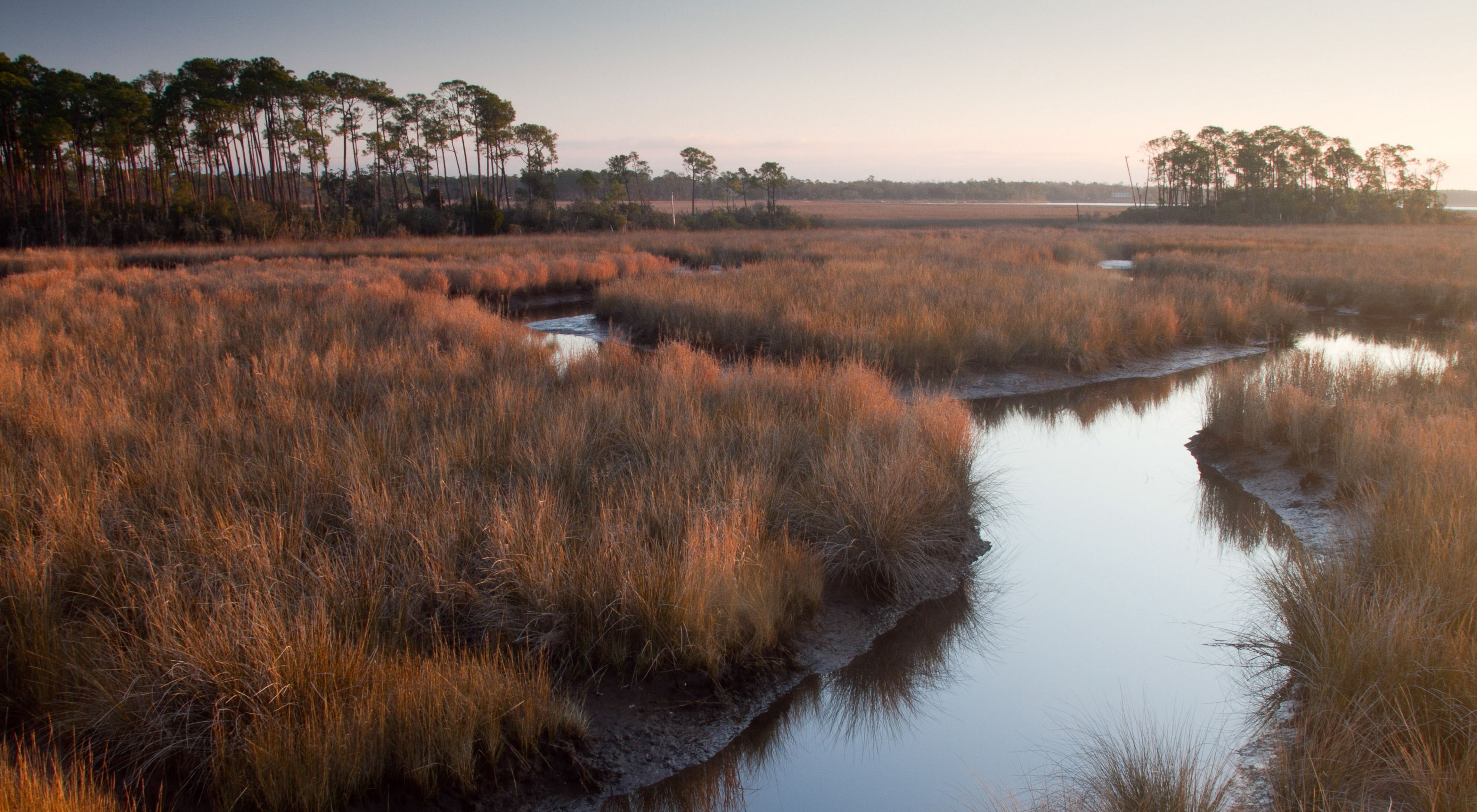Coastal Streams & Habitat Initiative
Improving the Gulf Coast through community engagement
Mississippi’s Web of Streams
Mississippi’s coastline is a web of creeks, streams and rivers that wander through pine forests, salt marshes and residential areas before reaching the Mississippi Sound. Some of these streams are freshwater and spring-fed while others are small tidal bayous. In the rapidly urbanizing Mississippi Gulf Coast, most have been dramatically altered, but all still retain at least some of their environmental, scenic, and historic value. They are the lifeblood of this unique habitat, pumping it full of fresh water, nutrients and aquatic life.
- The Mississippi Coastal Streams Basin drains over 1,545 square miles of land.
- Over 288 different species of fish can be found in Mississippi streams and bayous.
- Almost 60% of wetlands in Mississippi have been lost, 10,000 acres of which is coastal marsh.
These streams face a long list of challenges that affect the physical and biological processes of these coastal habitats. The Mississippi coast is the second largest urban area in the state. As wetlands, forests and other natural areas have been developed, we’ve lost the habitats that once absorbed rain water. Some have been altered for use as storm drains and experience channelization and erosion. These changes disrupt natural water flows and the gradual exchange of fresh water and salt water that the Mississippi Sound—and the fish and wildlife that call it home—need to thrive.
In some cases, streams that meander through urban areas experience high levels of fertilizers, pesticide, and litter. In a few instances, road and railroad culverts block free fish passage and streams are choked with invasive plants. Despite these challenges, they maintain potential to contribute as functioning wildlife habitat and urban green spaces.
Community-Led Conservation
The Nature Conservancy’s Marine program in Mississippi has embarked on a new and innovative conservation project known as the Coastal Streams and Habitat Initiative. Working in partnership with the Mississippi Department of Environmental Quality and the Pascagoula River Audubon Center, we will engage in stream stewardship and collect baseline monitoring data for the restoration of nine small coastal streams in all three coastal counties.
“We met with local stakeholders, residents, other conservation organizations and state and federal agencies,” says Director of Marine Programs Tom Mohrman. “We asked them what threats they see and what solutions they propose. From those conversations, we developed conservation action plans for each stream.”
The conservation action plans are tailored specifically for each stream. Some focus on stream erosion. For others, the stream needs to return to its meandering path to restore natural water flows. The conservation plans for each stream involve engaging local communities with the aim of long-term stewardship of these resources, grounding the plan in the local experience in order to promote community-led conservation.
The Streams
- Hancock County: Watts Bayou, Magnolia Bayou
- Harrison County: Bear Point Bayou, Coffee Creek, Brickyard Bayou, Turkey Creek, Oyster Bayou
- Jackson County: Rhodes Bayou, Bayou Chico
For more information on the Coastal Streams and Habitat Initiative, please contact Tom Mohrman, Director of Marine Programs.
